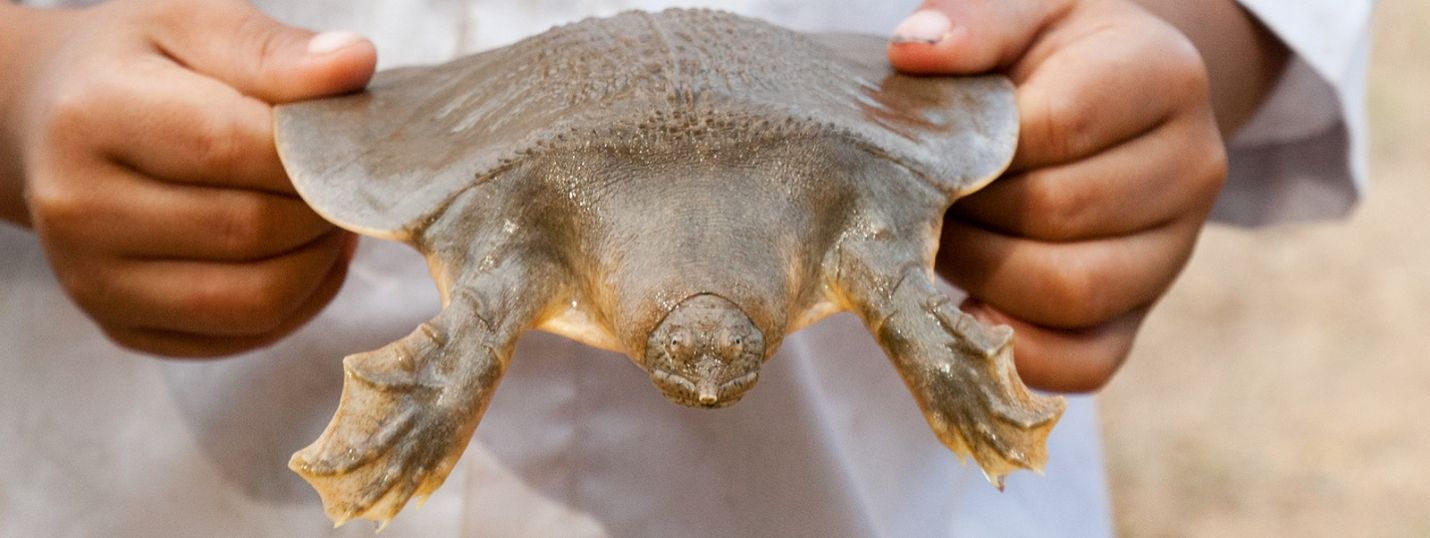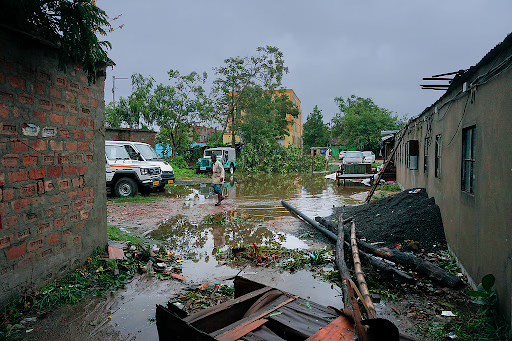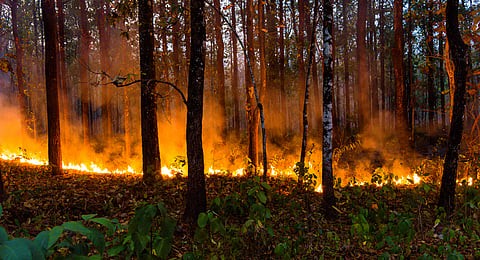





Copyright infringement not intended
Picture Courtesy: https://officerspulse.com/cantors-giant-softshell-turtle/
Context: The first-ever nesting report of the Cantor's giant softshell turtle (Pelochelys cantorii) marks a significant milestone in the conservation efforts for this incredibly rare and endangered species.
Key Highlights
Discovery and Location
|
Cantor's Giant Softshell Turtle |
|
|
Common Names |
Cantor's giant softshell turtle, Asian giant softshell turtle, frog-faced softshell turtle |
|
Distribution |
Historically found throughout South and Southeast Asia. Currently, fragmented populations in India, Bangladesh, Cambodia, Thailand, Malaysia, Vietnam, Indonesia, and possibly others. |
|
Habitat |
Inhabits slow-moving rivers, streams, lakes, and estuaries. Prefers sandy or muddy river bottoms. |
|
Appearance |
Extremely large freshwater turtle (up to 1 meter in length). Soft, leathery shell (carapace) lacking scutes. Flattened body for burying in sand and mud. Long, pointed snout with eyes near the tip giving a "frog-faced" appearance. Webbed feet for swimming. |
|
Behaviour |
Spends most of its life buried in sand, with only eyes and snout visible. Ambush predator, lying in wait to capture prey (fish, crustaceans, etc.). Surfaces only twice a day to breathe. Secretive and elusive, making it difficult to study. |
|
Diet |
Carnivorous, primarily eats: Fish, Crustaceans (crabs, shrimp, etc.), and Mollusks (snails, clams, etc.). |
|
Reproduction |
Little is known about their reproduction in the wild. Lays eggs in sandy riverbanks. Nests are vulnerable to predation and human collection. |
|
Conservation |
Listed as Critically Endangered by the IUCN due to: Habitat destruction and degradation, Hunting for meat and eggs, Illegal pet trade. |
|
PRACTICE QUESTION Q. What is the conservation status of the Cantor's giant softshell turtle? A) Least Concern B) Vulnerable C) Endangered D) Critically Endangered Answer: D Explanation: The IUCN Red List classifies this species as Critically Endangered due to threats like habitat loss, hunting, and the pet trade. They are at a very high risk of extinction in the wild. |






© 2025 iasgyan. All right reserved